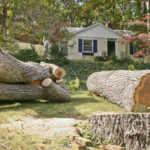Are you excited by your green thumb but bummed out whenever you have to hide it in mittens? A greenhouse might be just the thing you need to make your gardening habit a year round one.
Greenhouse gardening has a learning curve, but you can arm yourself with information before you start.
Get some tips below.
1. Buy Heat Sources
One of the best things about greenhouses is that they extend seasons. And we said extend – not get rid of the others.
That’s a mistake a lot of gardeners make, thinking that they can plant anything in a greenhouse all year round. You can extend a season by about two months (one up front, one at the end), but you can’t make it last forever.
If you want to get a head start on spring season growing, then invest in some heat sources. You can work with heating lamps, but they can be a fire hazard.
Propagation heating mats are a better idea and they’re cheap. If you’re having a really cold night and don’t have any mats on you – a heating pad underneath a pan or pot on the low setting can keep your little guys from freezing.
Heat Sources in Winter
A heating mat isn’t going to cut it when there’s a serious cold front out there. During the late fall and winter, you’ll need an actual heater – usually around 120 volts, depending on the size of your greenhouse.
Electric heaters are best for a small space – while Gas ones are a little more eco-friendly, you’ll be pumping your plants with some serious fumes.
If you don’t have the money to invest in an electric heater right now, invest in some big terra cotta pots and large, flat surface rocks.
When the sun shines into the greenhouse during the day it’ll warm those items up, and they’ll give off heat throughout the night.
2. Learn to Read Soil Moisture
Growing plants outside mean watering on a set schedule. Maybe you have a sprinkler system that does the work for you – or maybe you’re just a timely person.
But you’ll need to be a little less regulated when growing in a greenhouse. Due to the humidity and the altered environment, things need watering less, in general, than outside plants.
But the plants aren’t going to pipe up and tell you when they’re ready. It’s on you to figure it out.
Read a few articles, watch some videos, or consult your gardening books on how to read soil moisture. Only water your plants when the soil tells you to – paying attention to outside temperature.
Plants need less water in winter than they do in summer. It’s a trial and error thing – you’ll figure it out.
3. Buy a Few Thermometers
No greenhouse is complete without a thermometer. It’ll tell you when to pull shades, when things need more sun, and when you need to turn that aforementioned heater on.
But depending on the size of your greenhouse, you may need to get a few thermometers. If your house isn’t in the direct sun, placing two thermometers at opposite ends of the house will help you get a better average.
When you’re checking the temperature, take the average of both. This will also show you which side trends warmer, so you know where to place heat-sensitive plants.
It’ll also tell you if that heater we talked about is doing its job. Place it at one end and check the opposite thermometer. That’ll tell you if you need to move it to a more central location or go up in voltage.
4. Give Them Space!
A lot of beginner greenhouse gardens get excited and stuff as many plants as possible into their greenhouse. While it’s admirable that you want to save your outdoor babies from the elements – too many plants in a greenhouse mean a fight for resources.
Have you ever seen a tree that grew up through other trees to get more sun? That can happen in your greenhouse – though it’ll be less obvious.
There’s only so many nutrients in the soil, too. Make sure you pay attention to the planting instructions, how far things need to be apart. Give them an extra few centimeters, just to be safe.
If you have plants with bigger leaves, they’ll need more space. You don’t want your fern’s leaf shadow stopping smaller plants from getting light.
As long as you’re reasonable about your placement and amount of plants – you should be fine. If you’re questioning it, always aim for more space, not less.
5. Don’t Underestimate Pests
If you thought that taking your plants into a greenhouse was going to cancel out bugs – we’re sorry. That’s just not the case.
Other than bacteria and other small bio-species, insects are the most populous organism on the planet. They’re not, not going, anywhere.
To keep them at bay as much as possible, put screens on all your air intake areas. Then make sure you don’t keep the door to the house open for a long time.
Pets shouldn’t come in the greenhouse either. While they’re great for yard gardening partners, they can track in bugs and diseases.
Finally, do your greenhouse gardening before you do your yard plants. That’ll keep you and your tools from bringing pests in.
Need more information about greenhouse tools? Learn more here.
Don’t Give Up on Greenhouse Gardening
Are you feeling a little overwhelmed after reading these tips? Don’t worry! You can start with something small and go slow. If a few plants die, you can chop them up and use them as compost.
Greenhouse gardening is a skill, like any other. You’ll get better with practice.
Growing plants is a great way to go green – but it’s not the only way. Here are some more options.

